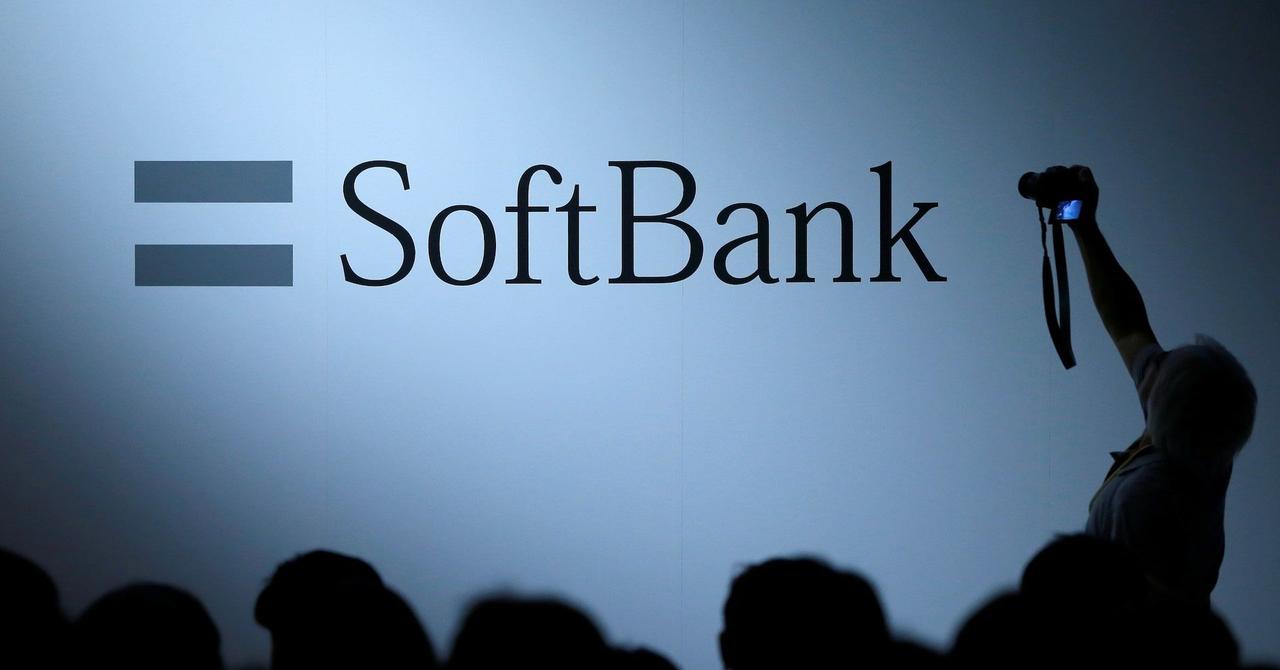The Rise of Generative Engine Optimization: Reshaping Brand Visibility in the AI Era
2 Sources
2 Sources
[1]
Will AI Cite Your Brand?
For years, digital marketing's goal was clear: Rank as high as possible on Google's first page. Keyword research, backlinks, and technical optimization shaped every content decision. But that world is rapidly changing, and we are already deep into a new era. Large language models (LLMs) like ChatGPT, Gemini, Perplexity, and Claude now function as answer engines. Rather than listing links, they synthesize information and produce conversational responses to users' queries, sometimes with citations. Your brand's visibility no longer depends on your Google ranking, but rather on whether AI references your expertise when generating answers. What AI algorithms prefer, and why traditional SEO isn't enough SEO still matters and remains highly relevant. Ranking well in search engine results, optimizing metadata, and creating authoritative, keyword-rich content are foundational practices that continue to support discoverability. But LLMs go beyond traditional ranking signals, and that's where generative engine optimization (GEO) and answer engine optimization (AEO) come in. These frameworks extend classic SEO principles into the realm of generative AI and are already reshaping how people discover brands and make purchasing decisions. In practical terms, both approaches involve making your insights and brand part of the broader content ecosystem, especially through credible media coverage and well-structured, high-quality content. Why it matters: The data behind the shift A Muck Rack study released in July analyzed over one million user prompts and found that 96 percent of links cited by AI fall within the communications scope -- such as stories from journalistic entities, owned and external blogs, NGO websites, and academic sources. High‑authority outlets like Reuters, AP News, Yahoo Finance, and TIME account for a large share of these citations. What's more, LLM traffic has quadrupled -- from under 1.3 percent in January 2024 to 5.6 percent of U.S. desktop search traffic by June 2025. Meanwhile, Bain & Company reports that 80 percent of consumers now rely on zero‑click results for at least 40 percent of their searches, cutting organic web traffic by an estimated 15-25 percent. These figures reflect a clear behavioral shift: Users are resolving queries directly through AI-generated answers, without ever clicking through to a traditional website. Practical steps to become AI‑visible Here are five actionable strategies to help your brand become more visible in AI-generated search results: 1. Answer real user questions clearly: Use conversational language and structure content around actual queries your audience is likely to ask. 2. Build a strong media presence: Appear in third-party content that AI tools already value and trust. Media mentions, interviews, expert commentary, and thought leadership all count. 3. Diversify across AI models: According to the Muck Rack study: 4. Structure your content for both humans and machines: AI prefers content that's easy to digest: clear headings, FAQs, bullet points, and short paragraphs all help machines parse information effectively. 5. Blend GEO/AEO with SEO: Technical SEO ensures your content is discoverable and crawlable, but storytelling, credibility, and authority drive AI inclusion. Our strategy in action: Media mentions via listicles and roundups Over the past year, my team began adapting our content strategy for GEO and AEO. One of the most effective tactics has been publishing high-quality listicles and expert roundups across trusted, industry-relevant outlets. These pieces position our company as a solution for services such as content marketing, online visibility, digital PR, and entrepreneur toolkits. By consistently showing up in well-structured, high-authority content, we've seen a clear uptick in AI-generated answers mentioning our services. Today, our brand appears in responses to queries like "best platforms for guest posting" or "sponsored content platforms." In some cases, ChatGPT and Google AI Overviews even include links to media that mention us. That visibility is not coincidental. It's the result of a deliberate content strategy rooted in GEO and AEO: publishing content where AI can find it, structuring it for machine readability, and building trust through credible media exposure. The future of discoverability belongs to communicators GEO and AEO aren't just new acronyms, they are a wake-up call for how modern discoverability works. And for PR, content, and marketing teams, it presents a massive opportunity. Generative and answer searches favor the very things communications teams do best: clarity, authority, and relevance. It values well-structured, trustworthy information. GEO and AEO blend the strategic rigor of SEO with the narrative strength of PR. This is the time for integrated communications teams -- PR, marketing, and content -- to collaborate more closely than ever. Because today, when someone asks a question in a tool like ChatGPT or Gemini, the answer isn't coming from who ranks highest. It's coming from who's most frequently and credibly mentioned. You're no longer competing for position. You're competing for inclusion. The brands surfaced in AI-generated responses aren't necessarily the ones with the biggest budgets. They're the ones with consistent, credible visibility across high-authority media. And those that learn to communicate clearly with both people and machines will shape how they're discovered, trusted, and remembered in the era of AI-powered search. So ask yourself: When someone searches for a solution your company offers -- on ChatGPT, Gemini, or Perplexity -- will your name come up? The preferred-rate deadline for the 2025 Inc. Best in Business Awards is this Friday, August 15, at 11:59 p.m. PT. Apply now.
[2]
Your Next Customer Will Come from ChatGPT -- If You Master GEO
Generative AI is changing how audiences discover, consume and trust information -- and with it, the rules of PR and marketing. As tools like Google's AI Overviews and ChatGPT become the front door to content, a new discipline is emerging: Generative Engine Optimization (GEO). Companies must understand how GEO is reshaping brand visibility, why earned and owned content must evolve, and what businesses should be doing to prepare for a generative-first future. Join top CEOs, founders and operators at the Level Up conference to unlock strategies for scaling your business, boosting revenue and building sustainable success. GEO is the practice of optimizing content to appear in AI-generated answers from tools like ChatGPT or Google's Search Generative Experience (SGE). It differs from SEO in important ways: Tools like Google's AI Overviews and ChatGPT are changing how customers discover and trust information. They are reshaping discovery by delivering instant, synthesized answers instead of directing users to multiple sources. They're also shifting trust from traditional websites to AI-generated summaries making the model the new gatekeeper of credible information. Related: AI Can Burn Out Your Team -- Or Save It. Here's the Difference "Visibility" has acquired new meaning with the advent of GEO. Here's how I define visibility in a generative-first content landscape: it means being recognized and trusted in a noisy space that is saturated with content. It also means showing up consistently and meaningfully in the right communication channels and conversations and standing out with credibility. Earned media placements and PR-driven content create greater visibility, influencing generative AI outputs. When your company is featured in respected media outlets, it shapes how AI systems "learn" about you. Those placements become part of the digital fabric that makes your narrative discoverable, contextualized and reinforced across both human and machine interpretation. You have to intentionally shape how your brand shows up in AI-generated outputs. To check for accuracy and credibility, search your company, executives and products using generative AI tools and see what comes up. This "audit" will show you how, or if, your company is showing up. Invest in PR to drive ongoing, high-quality earned media coverage. Generative models rely on trusted public data. Coverage in authoritative outlets and consistent thought leadership help define your narrative in the AI ecosystem. Create quality, consistent, well-tagged content like press releases, FAQs, blogs and explainers that AI can easily parse and summarize. Build out a machine-readable foundation of facts about your company's people, products, milestones and positioning. This helps prevent misrepresentation and hallucination in AI responses. PR, SEO and data strategy disciplines are converging fast. Collaborate across content, communications and digital strategy to build a unified approach to visibility in both search and AI-generated outputs. There will be new skill sets and roles designed to manage visibility across both human and machine audiences. Here are three interesting roles I've heard about: Related: How AI Is Transforming the SEO Playbook -- and What Businesses Must Do to Ensure Long-Term Relevance and Visibility Business leaders must take a broader view of content strategy to serve both human audiences and AI systems. PR can no longer focus solely on generating buzz. It must evolve to engineer discoverability, ensuring your brand appears accurately and consistently in both media coverage and AI-generated content. Focus on securing high-quality earned media coverage. Amplify expert-driven content that positions your brand as a credible authority in the space. Generative AI pulls from high-quality, trusted sources. And make sure to use clean headlines, consistent messaging and well-tagged digital assets (like FAQs, explainer blogs or press releases) that can be easily indexed and understood by machines, not just people. AI models value clarity and context. Be intentional with keywords, brand voice and accuracy. Everything you publish feeds the AI ecosystem. From a podcast quote to a bylined article, assume it could be surfaced, summarized or cited in future outputs. I predict that in the next two to three years, GEO will collapse the silos between PR, marketing and search. PR will become a core visibility driver for AI-based discovery. As generative engines replace traditional search for many users, PR will shape machine understanding. Media placements, quotes and thought leadership will become ever more critical data inputs that influence how AI summarizes and represents your brand. SEO will evolve into narrative optimization. Marketers will need to ensure brand messaging is consistently structured, credible and reinforced across all public touchpoints. GEO will require optimization not just for ranking but for inference, context and coherence in AI-generated content. Marketing will shift from campaigns to context-building. Brands must feed the AI ecosystem with high-quality, high-context materials that can be surfaced across any platform or prompt. That means marketing will spend more time on source authority, content integrity and long-term discoverability. No company survives by doing what it's always done and ignoring innovation. GEO is a powerful new branch of SEO, and you need to capitalize on it to be seen by decision-makers now that AI summaries dominate search queries. Use the strategy and recommendations discussed above to chart your own course to getting the visibility your brand deserves.
Share
Share
Copy Link
As AI-powered search tools become increasingly prevalent, businesses are adapting their digital marketing strategies to focus on Generative Engine Optimization (GEO) and Answer Engine Optimization (AEO) to maintain visibility and relevance in AI-generated responses.
The Shift from SEO to GEO and AEO
In the rapidly evolving digital landscape, a significant shift is occurring in how brands achieve visibility online. Traditional Search Engine Optimization (SEO) is no longer sufficient as Large Language Models (LLMs) like ChatGPT, Gemini, and Claude transform into answer engines. These AI-powered tools are changing the game by synthesizing information and producing conversational responses to user queries, often with citations
1
.This transformation has given rise to new optimization strategies: Generative Engine Optimization (GEO) and Answer Engine Optimization (AEO). These approaches extend classic SEO principles into the realm of generative AI, reshaping how people discover brands and make purchasing decisions
1
.
Source: Inc.
The Impact of AI on Search Behavior
Recent data underscores the significance of this shift:
- A Muck Rack study found that 96% of links cited by AI fall within the communications scope, including journalistic entities and academic sources
1
. - LLM traffic quadrupled from under 1.3% in January 2024 to 5.6% of U.S. desktop search traffic by June 2025
1
. - Bain & Company reports that 80% of consumers now rely on zero-click results for at least 40% of their searches, reducing organic web traffic by an estimated 15-25%
1
.
These figures reflect a clear behavioral shift, with users increasingly resolving queries directly through AI-generated answers without clicking through to traditional websites.
Strategies for AI Visibility
To become more visible in AI-generated search results, brands should consider the following strategies:
- Answer real user questions clearly using conversational language
1
. - Build a strong media presence through third-party content that AI tools trust
1
. - Structure content for both humans and machines using clear headings, FAQs, and bullet points
1
. - Blend GEO/AEO with SEO to ensure content is discoverable and crawlable
1
. - Invest in PR to drive ongoing, high-quality earned media coverage
2
.

Source: Entrepreneur
Related Stories
The Evolution of PR and Marketing
The rise of GEO and AEO is reshaping the roles of PR and marketing professionals. These disciplines are converging as companies strive to manage visibility across both human and machine audiences
2
.New roles are emerging to address this shift, such as:
- AI Visibility Strategist
- Narrative Engineer
- AI-Human Content Liaison [2](https://www.entrepreneur.com/growing-a-business/your-next-customer-found-you-in-chatgpt-heres-why/495481]
The Future of Brand Discoverability
As generative AI continues to reshape how information is discovered and consumed, the future of brand discoverability lies in the hands of communicators. GEO and AEO favor clarity, authority, and relevance – qualities that communications teams excel at delivering
1
.In the coming years, it's predicted that:
- GEO will collapse the silos between PR, marketing, and search.
- PR will become a core visibility driver for AI-based discovery.
- SEO will evolve into narrative optimization.
- Marketing will shift from campaigns to context-building
2
.
As the digital landscape continues to evolve, businesses must adapt their strategies to ensure visibility and relevance in an AI-driven world. The brands that learn to communicate effectively with both people and machines will shape how they're discovered, trusted, and remembered in this new era of AI-powered search.
References
Summarized by
Navi
[1]
[2]
Related Stories
AI Search Transforms Brand Visibility as Generative Engine Optimization Replaces Traditional SEO
03 Dec 2025•Technology

The Evolution of Search: How AI is Reshaping Brand Visibility and Marketing Strategies
22 Aug 2025•Technology

AI Revolutionizes Search: Google Adapts, Rivals Emerge
25 Jul 2025•Technology

Recent Highlights
1
Meta acquires Manus for $2 billion, adding revenue-generating AI agents to its platforms
Business and Economy

2
Nvidia locks in $20 billion Groq deal, securing AI chip rival's technology and talent
Business and Economy

3
Geoffrey Hinton warns AI job replacement will accelerate in 2026 as systems gain new capabilities
Technology





